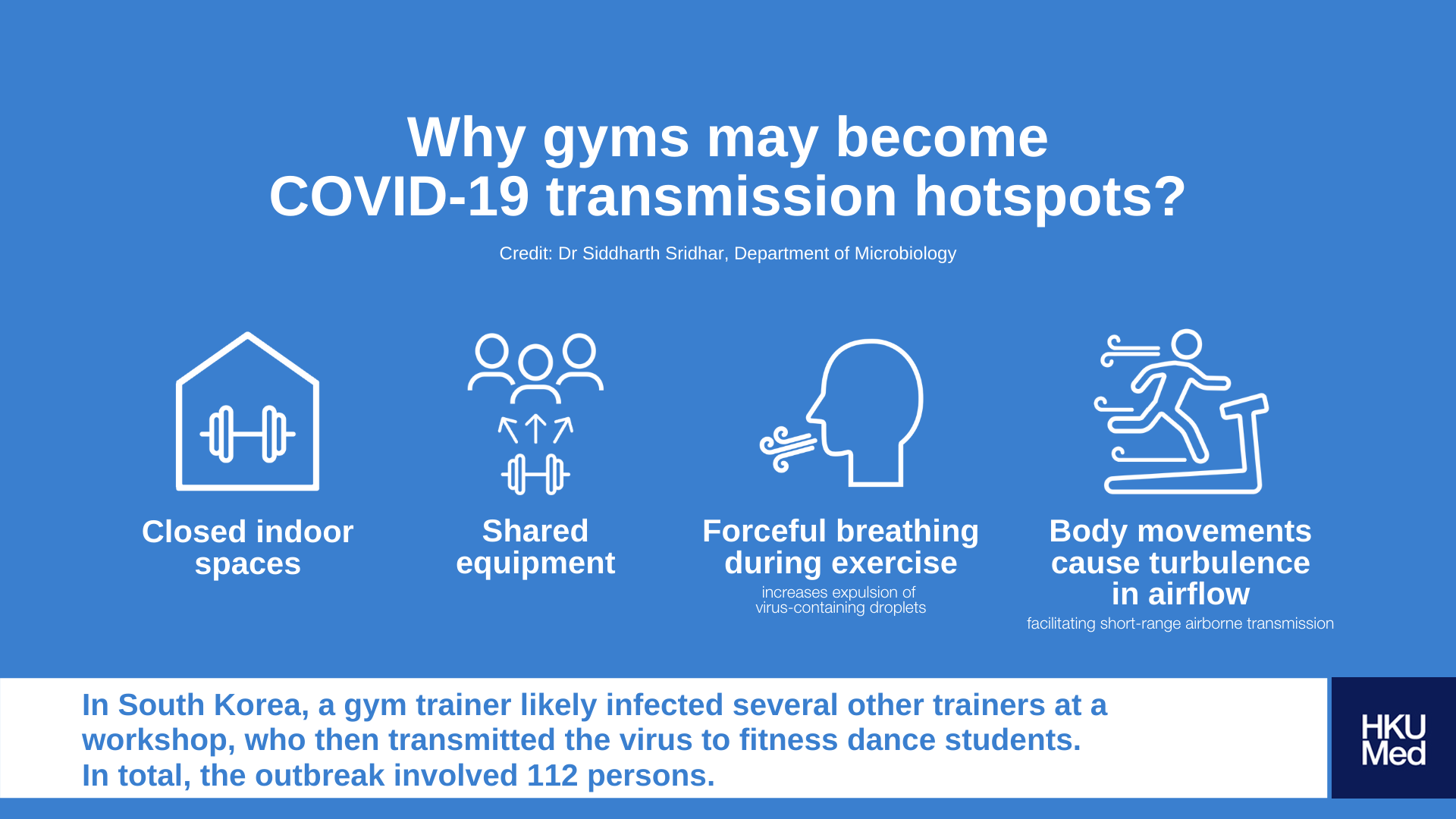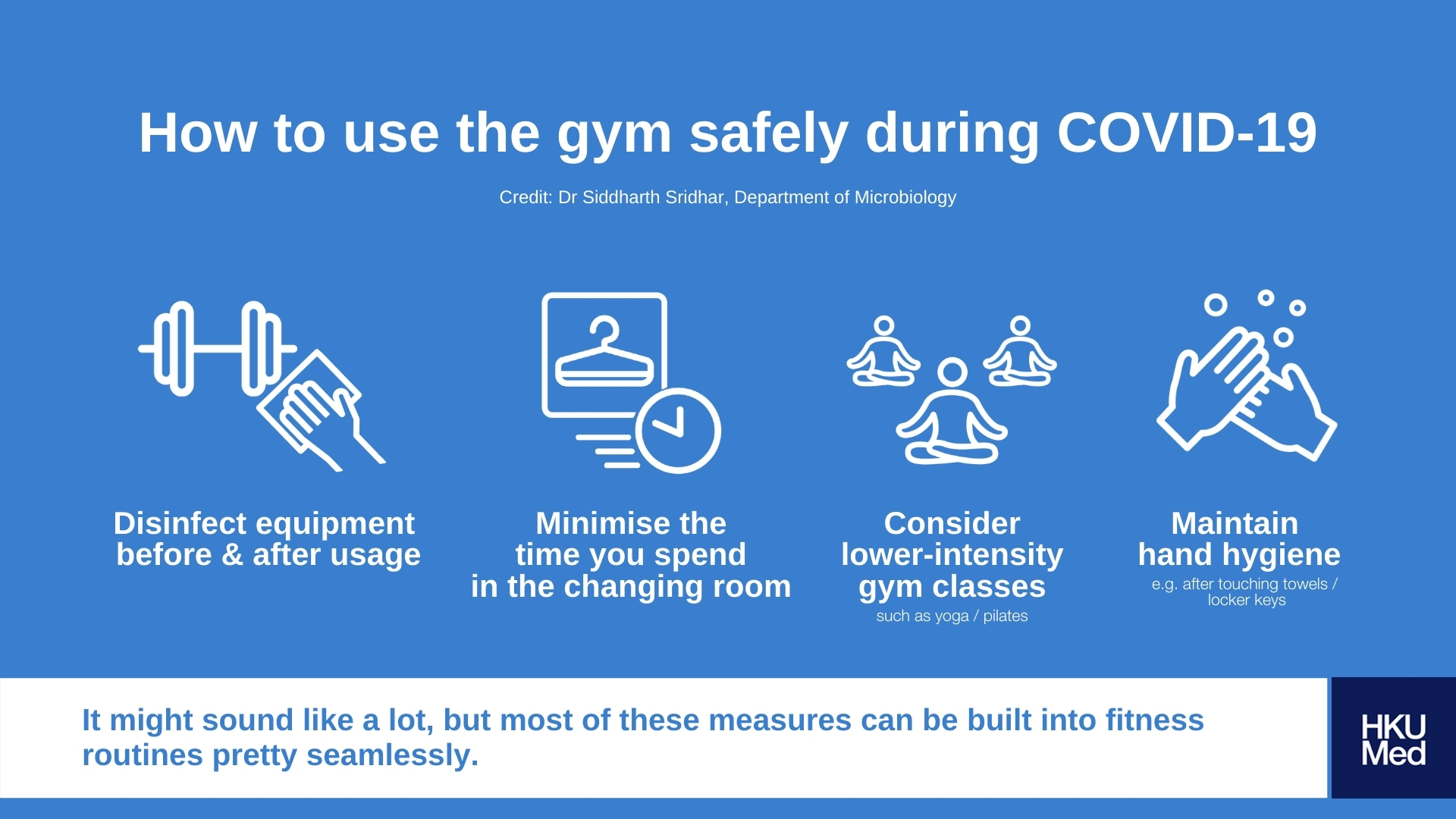Credit: Dr Siddharth Sridhar, Department of Microbiology
Originally posted on Facebook
Exercise is important for mental, physical and immune health. Gyms provide valuable facilities for exercise in congested, polluted and humid cities. However, gyms are also potential hotspots of COVID-19 transmission due to several unique factors:
- They are closed indoor spaces, which are often crowded during evenings and weekends. Many gyms in HK are on high-rises without open windows.
- Gym equipment such as weights, benches, treadmill handles, water fountains and locker keys are shared.
- Forceful breathing during exercise probably increases expulsion of virus-containing droplets.
- Body movements cause turbulence in airflow facilitating short-range airborne transmission.

These factors are illustrated in a detailed outbreak investigation conducted in Cheonan, South Korea (Jang S et al, Emerg Infect Dis, 2020). In this outbreak, one trainer from Daegu city likely infected several other trainers at a trainer workshop. Infected trainers then transmitted the virus to 54 fitness dance students over several days and facilities. Including secondary/ tertiary transmissions from infected students, 112 persons were involved in the outbreak, clearly highlighting the potential of super-spreading events originating in fitness classes.

Source: Centers for Diease Control and Prevention
So, how do we use the gym safely? A few suggestions:
- Bring your own towels
One large towel to spread on benches/ mats and one hand towel to wipe off sweat. - Bring your own gym clothing
Some gyms provide clothes and socks, but you never know who has handled that pile before you. - Bring your own water
Don't use water fountains where you have to bend down to the nozzle. - Bring spare masks
The government has mandated mask usage in gyms. Once your mask filter gets soaked with sweat, it is less effective, so you will need a change.

- Disinfect equipment before and after usage: some gyms provide alcohol wipes to wipe down free weights and handles. If not, bring your own.
- Spend as little time in the changing room as possible. In my experience, this is usually the most cramped/ crowded area in the gym. Physical distancing is often impossible during busy hours. Consider showering at home instead.
- If you are going for a class, consider low-intensity alternatives like yoga/ pilates with physical distancing between teachers and students. In the Korean outbreak, the infected yoga instructor didn't spread the virus to any of the 25 students in the class, compared to attack rates of 10-70% in more dynamic dance class workouts. However, avoid 'hot' yoga, which is often taught in poorly ventilated muggy spaces.
- Hand hygiene! Build a habit of disinfecting your hands regularly. Remember hand hygiene after handling locker keys, used towels & membership cards.

It sounds like a lot, but most of these measures can be built into fitness routines pretty seamlessly. It is a tough period for gyms. They will have to reinvent themselves in order to survive this tough period when class sizes are restricted. Online classes might be a way forward.
Have a good weekend, hopefully with a little exercise :)